The positive impact a well-tailored regular exercise program can have on a healthy lifestyle, improvement of general well being, increased energy level, and stress and weight management is well known. Additional benefits of exercises for those individuals at risk of, or have lymphedema include improved limb flexibility, range of movement, and most importantly increased lymphatic drainage and venous return from the swollen areas, which can result in reduction of limb size and subjective limb symptoms.
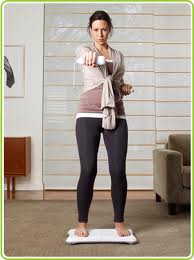 Research indicates that the transport of lymph fluid and proteins from swollen areas increases during and after exercises. Studies show that lymph flow increased five-fold in the first 15 minutes and two to three fold during the remaining time of a two hour exercise protocol. In addition to the benefits to the lymphatic system, it is known that muscle activity and diaphragmatic breathing also have a considerable impact on venous blood returning from the extremities back to the heart, which in turn also positively affects fluid management within the interstitial spaces; increased venous return is of particular importance for those individuals affected by lower extremity lymphedema.
Research indicates that the transport of lymph fluid and proteins from swollen areas increases during and after exercises. Studies show that lymph flow increased five-fold in the first 15 minutes and two to three fold during the remaining time of a two hour exercise protocol. In addition to the benefits to the lymphatic system, it is known that muscle activity and diaphragmatic breathing also have a considerable impact on venous blood returning from the extremities back to the heart, which in turn also positively affects fluid management within the interstitial spaces; increased venous return is of particular importance for those individuals affected by lower extremity lymphedema.
To better understand these effects it is necessary to take a look at the anatomy and physiology of the lymphatic and venous systems:
 The lymphatic system is closely associated with the blood system and represents an accessory route by which lymph fluid flows from the body’s tissues back into the blood stream. Contrary to the blood system, the lymphatic network and its vessels do not form a closed circulatory system. It begins with small lymphatic vessels (lymph capillaries) in the body tissues, and continues with successively larger lymphatic vessels (collectors and trunks), which ultimately connect to the venous part of the blood system via the venous angles, which are comprised of the internal jugular and subclavian veins on either side of the neck. While the flow of blood through the arteries and veins is uninterrupted, the transport of lymph fluid through the lymph vessel system is interrupted by lymph nodes. The lymphatic system has no central pump; lymph vessels produce their own propulsion system with a network of smooth musculature located in the walls of lymph collectors and trunks.
The lymphatic system is closely associated with the blood system and represents an accessory route by which lymph fluid flows from the body’s tissues back into the blood stream. Contrary to the blood system, the lymphatic network and its vessels do not form a closed circulatory system. It begins with small lymphatic vessels (lymph capillaries) in the body tissues, and continues with successively larger lymphatic vessels (collectors and trunks), which ultimately connect to the venous part of the blood system via the venous angles, which are comprised of the internal jugular and subclavian veins on either side of the neck. While the flow of blood through the arteries and veins is uninterrupted, the transport of lymph fluid through the lymph vessel system is interrupted by lymph nodes. The lymphatic system has no central pump; lymph vessels produce their own propulsion system with a network of smooth musculature located in the walls of lymph collectors and trunks.
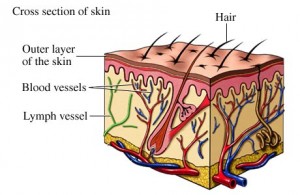 The superficial lymphatic vessels are located between the muscle layers and the skin. With activity, the muscle contracts and relaxes against the skin, which increases lymphatic activity and return of lymph fluid. In most cases of lymphedema, the elastic fibers in skin tissues affected by lymphedema are damaged and unable to provide adequate resistance against the musculature working underneath, and the blood and lymph vessels within these tissues; therefore it is advisable to wear compression bandages or garments during exercise. External compression compensates for the elastic insufficiency of the affected tissue, providing the resistance necessary to improve lymphatic return and to maintain the reduction of the swelling.
The superficial lymphatic vessels are located between the muscle layers and the skin. With activity, the muscle contracts and relaxes against the skin, which increases lymphatic activity and return of lymph fluid. In most cases of lymphedema, the elastic fibers in skin tissues affected by lymphedema are damaged and unable to provide adequate resistance against the musculature working underneath, and the blood and lymph vessels within these tissues; therefore it is advisable to wear compression bandages or garments during exercise. External compression compensates for the elastic insufficiency of the affected tissue, providing the resistance necessary to improve lymphatic return and to maintain the reduction of the swelling.
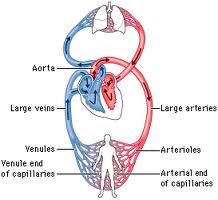 The blood circulatory system represents a closed system with the heart as its central motor, and blood and blood vessels as the other structural elements. The main purpose of the blood vessels is the uninterrupted supply of all body tissues with nutrients and oxygenated blood, and the removal of metabolic waste and carbon dioxide from the tissue cells. The blood pressure inside the venous part of the blood system is considerably lower than the pressure in the arterial side; pooling of venous blood, especially in the lower extremities, is prevented by a system of valves inside the larger veins, which helps to ensure the efficient transport of venous blood back to the heart. A sufficient return of blood to the heart would not be possible without a functioning valvular system and the help of the muscle and joint pumps, diaphragmatic breathing, and the suction effect of the heart during its relaxation phase (diastole).
The blood circulatory system represents a closed system with the heart as its central motor, and blood and blood vessels as the other structural elements. The main purpose of the blood vessels is the uninterrupted supply of all body tissues with nutrients and oxygenated blood, and the removal of metabolic waste and carbon dioxide from the tissue cells. The blood pressure inside the venous part of the blood system is considerably lower than the pressure in the arterial side; pooling of venous blood, especially in the lower extremities, is prevented by a system of valves inside the larger veins, which helps to ensure the efficient transport of venous blood back to the heart. A sufficient return of blood to the heart would not be possible without a functioning valvular system and the help of the muscle and joint pumps, diaphragmatic breathing, and the suction effect of the heart during its relaxation phase (diastole).
The positive impact on lymphatic and venous return of muscle and joint activity during exercise, especially while compression garments are worn, and abdominal (diaphragmatic) breathing exercises explain the benefits of a well rounded and tailored exercise regimen for those individuals affected by lymphedema of the extremities.
Which exercises can be incorporated into the patient’s self-management regimen?
There is no real consensus on the type of exercise regimen for individuals affected by lymphedema. Research suggests that a program of progressive exercises, i.e. starting with gentle exercises and increasing intensity moderately over time, tailored to each patient’s needs and abilities, is not likely to increase the risk of lymphedema.
Although research has shown that strenuous exercises can be undertaken by those individuals at risk of, or already having lymphedema without negative effects, it is advisable to start the exercise regimen slowly, which avoids the risk of increased swelling, strains and injury to muscles, and allows the individual to observe how the edematous extremity responds to exercise.
In some cases it is not an easy task to come up with a general statement of which exercises should be avoided for individuals with lymphedema. Many patients find it important to continue their pre-lymphedema activities, even if these activities are considered “high-risk” for lymphedema. Tennis or golf for example does not rank very high on the list of beneficial activities for individuals with upper extremity lymphedema. For patients with lymphedema of the leg, kick-boxing and step-aerobics are activities that bear a great risk of injury and are considered “high-risk activities”. However, for many individuals engaging in these activities, exercise plays such a vital role in their daily routine, and is so ingrained in their personality, that giving up these “high-risk activities” would have a serious impact on their well-being.
The fact is that nobody knows better than the lymphedema patient her-or himself what is good for their body and spirit. As long as the patients are careful and under the care of a trained lymphedema therapist or health care professional with experience in lymphedema, wear their compression garment during these physical activities, and the exercise regimen does not cause discomfort or pain, continuing with these activities should not have any negative impact. However, if the affected limb hurts, feels strained, or increases in volume during and after the activity, the patient should adjust as necessary and consult with their lymphedema therapist or physician. The keywords here are caution and moderation; gradual progression is imperative while trying to accomplish an improved return of lymphatic fluid without adding further stress to an impaired lymphatic system.
For the majority of patients at risk for or diagnosed with lymphedema an exercise regimen typically includes some combination of:
- Flexibility and stretching exercises – these exercises move the skin, muscle, and other tissues in the affected area, and assist in relieving the feeling of tightness that is often associated with lymphedema. An effective flexibility training program can also improve physical performance and help reduce risk of injury. By improving range of motion, the body requires less energy to make the same movements; it also contributes to more flexible joints and ligaments thus lessening the likelihood of injuries. Mild Yoga may be especially helpful to promote both flexibility and relaxation.
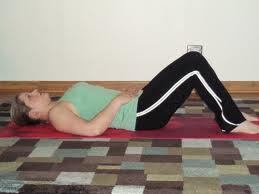 Deep breathing exercises are beneficial as well. Studies have shown that the venous return and lymphatic drainage in the thoracic lymphatic duct is positively impacted by changes in the intra-thoracic pressure caused by deep breathing exercises. The downward and upward movement of the diaphragm in deep abdominal breathing is an essential component for the sufficient return of lymphatic and venous fluid back to the bloodstream. The movement of the diaphragm, combined with the outward and inward movements of the abdomen, rib cage, and lower back, also promotes general well-being, peristalsis and return of venous blood back to the heart.
Deep breathing exercises are beneficial as well. Studies have shown that the venous return and lymphatic drainage in the thoracic lymphatic duct is positively impacted by changes in the intra-thoracic pressure caused by deep breathing exercises. The downward and upward movement of the diaphragm in deep abdominal breathing is an essential component for the sufficient return of lymphatic and venous fluid back to the bloodstream. The movement of the diaphragm, combined with the outward and inward movements of the abdomen, rib cage, and lower back, also promotes general well-being, peristalsis and return of venous blood back to the heart.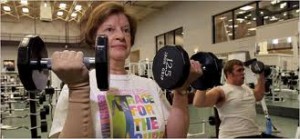 Strength training – strength exercises improve muscular power, increase the strength in ligaments, tendons and bones, and positively contribute to weight control. Resistive exercises are typically performed in a repetitive fashion against an opposing load. Gradual progression is crucial, and exercise programs should be comparable to the patient’s fitness level. More research is needed to determine whether weight-training and other forms of exercise help reduce the risk of lymphedema.
Strength training – strength exercises improve muscular power, increase the strength in ligaments, tendons and bones, and positively contribute to weight control. Resistive exercises are typically performed in a repetitive fashion against an opposing load. Gradual progression is crucial, and exercise programs should be comparable to the patient’s fitness level. More research is needed to determine whether weight-training and other forms of exercise help reduce the risk of lymphedema.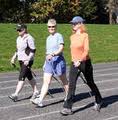 Aerobic exercise – aerobic conditioning is generally performed in a repetitive fashion using large muscle groups. Some long-term benefits include decrease in resting heart rate, improved muscular strength, weight control and increased return of venous and lymphatic fluids. Aerobic exercises assist with weight loss and encourage deep breathing, which in turn supports lymphatic and venous return.
Aerobic exercise – aerobic conditioning is generally performed in a repetitive fashion using large muscle groups. Some long-term benefits include decrease in resting heart rate, improved muscular strength, weight control and increased return of venous and lymphatic fluids. Aerobic exercises assist with weight loss and encourage deep breathing, which in turn supports lymphatic and venous return.
As mentioned above, high speed activities such as golf, tennis, soccer or running are not suggested as they may actually increase lymphedema.  Activities such as walking, swimming, water aerobics (optimal water temperature about 82F/28C), light weight training or cycling, in contrast are generally safe and considered beneficial. Patients should use caution with hot tubs and lakes during the summer (in warmer climates any time of the year) as they present an increased risk for various types of infections caused by bacteria.
Activities such as walking, swimming, water aerobics (optimal water temperature about 82F/28C), light weight training or cycling, in contrast are generally safe and considered beneficial. Patients should use caution with hot tubs and lakes during the summer (in warmer climates any time of the year) as they present an increased risk for various types of infections caused by bacteria.
Some general rules on exercising with lymphedema:
- Use common sense
Lifting heavy weights or running a marathon is not the best way to start a lymphedema exercise regimen. An exercise program should start gradually to avoid sprains and injury to muscles and should be followed by a warm down after active exercises. Studies have shown that a 10–15-minute warming down assists the lymphatic system in the removal of excess fluid and metabolites, which have accumulated in the interstitial space. - Observe
Watch your extremity during and after exercise activity for any change in comfort level, size, shape, texture, heaviness, or firmness. Any changes could be an indication that you need to adjust a particular activity or take a break. If a change persists for more than a few days, consult with your doctor or lymphedema therapist. - Work with a lymphedema therapist or other health care professional with knowledge in the treatment and management of lymphedema
Use the resources available to locate a lymphedema therapist (Find a Therapist). In the beginning of an exercise regimen, it is beneficial to work with someone with expertise in lymphedema management who can provide guidance and feedback. In many cases the exercise program needs to be individualized to take into consideration the stage of your lymphedema, possible accompanying medical conditions (heart problems, pulmonary issues, diabetes, etc.), or if you are taking any medication that has side effects. Once you are familiar with the exercise program, you will be able to work on your own. If, for any reason, you do not have access to a lymphedema therapist, or a health care professional with knowledge in lymphedema, consult with a Physical Therapist and explain your specific situation. These professionals have access to information specific to lymphedema and will be able to provide guidance.
Working with instructors and trainers without a medical background and no knowledge of the specific issues regarding lymphedema may have adverse effects, such as increased swelling or injury.
Dear Lymphedema Blog Reader – if you like the contents on this website, please help to keep it going. A great amount of work and research is necessary to provide you with up-to-date information on this site. Your donation supports these efforts and associated administrative costs. Surplus funds will be donated to Lymphedema/Lipedema-related charitable endeavors. Please donate using the “Donate Now” button on the right upper hand of this page – Thank You!
Join Lymphedema Guru, a Facebook page solely dedicated to inform about all things related to lymphedema – news, support groups, treatment centers, and much more

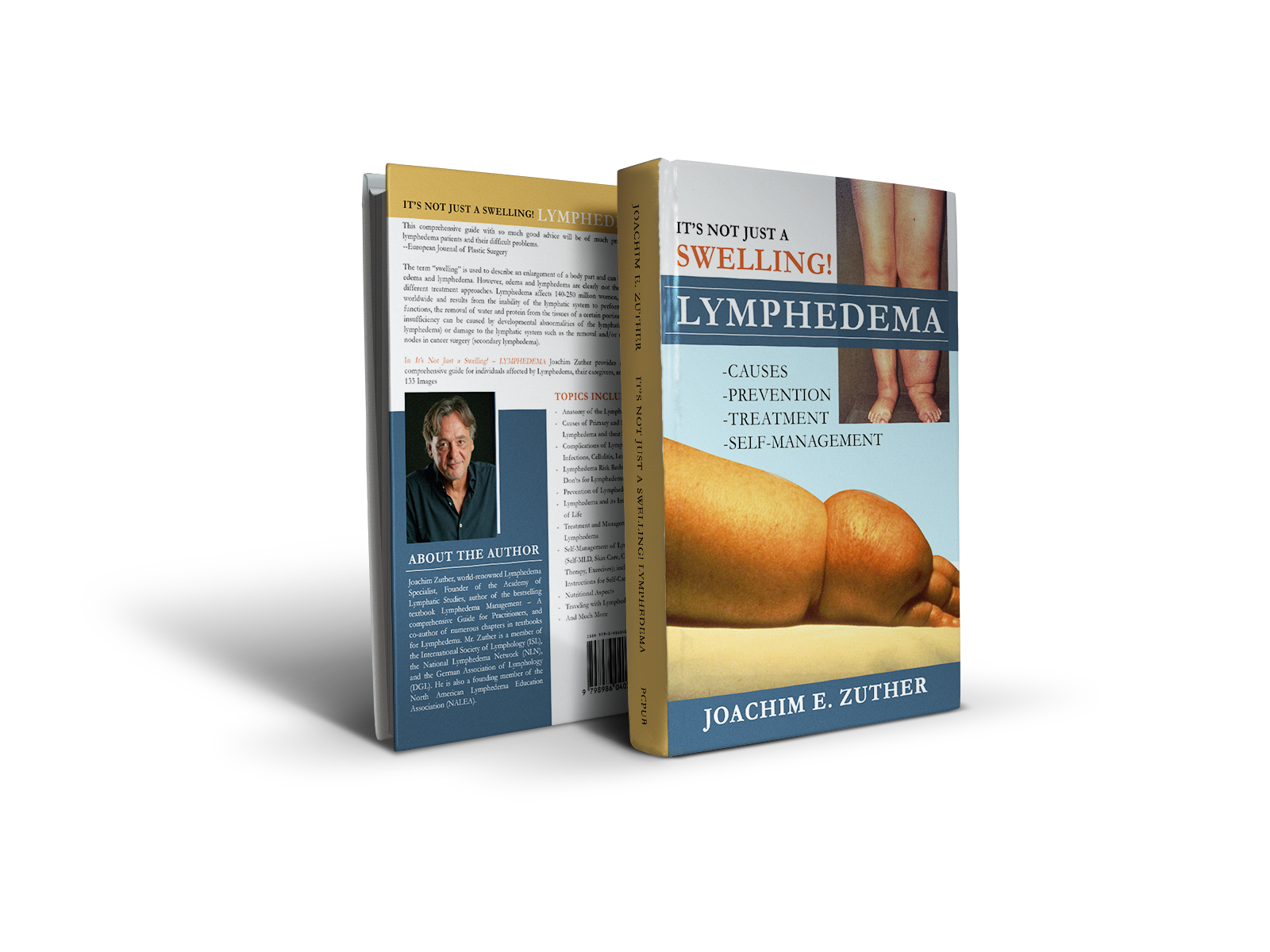
 Joachim Zuther, Lymphedema Specialist.
Joachim Zuther, Lymphedema Specialist. 

Are you familiar with Healthy-Steps, Moving you to better health with the Lebed Method? It is a therapeutic exercise program that primarily targets the Lymphatic System developed by the Lebed family in 1980 and has instructors throughout the world? If you are not familiar with the program, may I send you some information? I am the current owner, purchasing it from the Lebeds last year.
Bonnie Vermillion
bonnired@comcast.net
http://www.gohealthysteps.com
540-547-4824
Yes, I am familiar with this method and mention it in my book “Lymphedema Management”
Thanks for this reparabel artikle.
In my opinion excercises are also needed for à gold lymph absorption: due to movement the endothelial cells will open (through the anchoring filaments) and absorb lymph load.
Did I miss that part in your article?
Kind regards
What about paddling? I have moderate lymphedema affecting my left hand to my elbow.
Definitely a beneficial activity
I’ve have successfully battled my lymphedema for 2 years, I’m 61 and I had 14 lymph nodes removed during a cancer surgery, I’m very active but in the last 2 months my leg has swollen, from the thigh to my toes, with my foot being painful. Previously I only had swelling below the knee and that was managed with exercise, compression and elevation. I’m seeing a new therapist and I’ve started with MLD. However, I getting mixed messages, do I exercise before or after MLD. My typical exercise is walking for 60 minutes in a pool, in water that is 4 feet deep. I also walk outdoors 3-4 miles, depending on the weather. I’m in Michigan so it’s too cold today. However, in the summer I will walk 5-6 miles on the golf course, probably 4 days a week. My right thigh is now 2″ bigger than my left and I’m trying to get back to “normal.” Any input will be greatly appreciated. My daughter and I are planning a hiking trip along the Lake Superior shoreline, right now that seems impossible.
Dear Suzanne: Research indicates that exercises are most effective when performed following MLD and with compression in place. Here is a link to an article that may be of interest to you: https://www.lymphedemablog.com/2015/11/12/why-exercises-should-be-part-of-your-lymphedema-treatment-regimen/
I have recently been diagnosed with lymphedema in both legs so did the wrapping protocol for a month. I have medical compression hose between 20 and 30 mmHG. I am addicted to yoga and know that this is the one thing that really keeps it all moving. Now that I have to wear compression hose, I slip all over the mat because I cannot get my footing. I have tried the toe-less kind but the heel is still covered and enables slippage. Do you know of any company that carries medical compression footless compression tights that I can wear during my yoga practice? I have checked out Medi and Juzo but no success. I am swimming everyday until I can find an answer. I miss my yoga and so do my legs! Any suggestions would be appreciated.
Dorinda -unfortunately, there are no compression garments without foot attachments. However, you can certainly take your compression hose off for the duration of your yoga exercise and put it back on once finished.
Dorinda
I have the perfect solution! I also have lower limb lymphedema and go to Pilates and Booty Barre. The studio shoes make by Nike will give you both flexibility and grip. I got mine at Amazon but any place that sells dance products should have them. At Amazon they are called Nike Womens Studio Wrap 3 dance Yoga shoes.
good luck